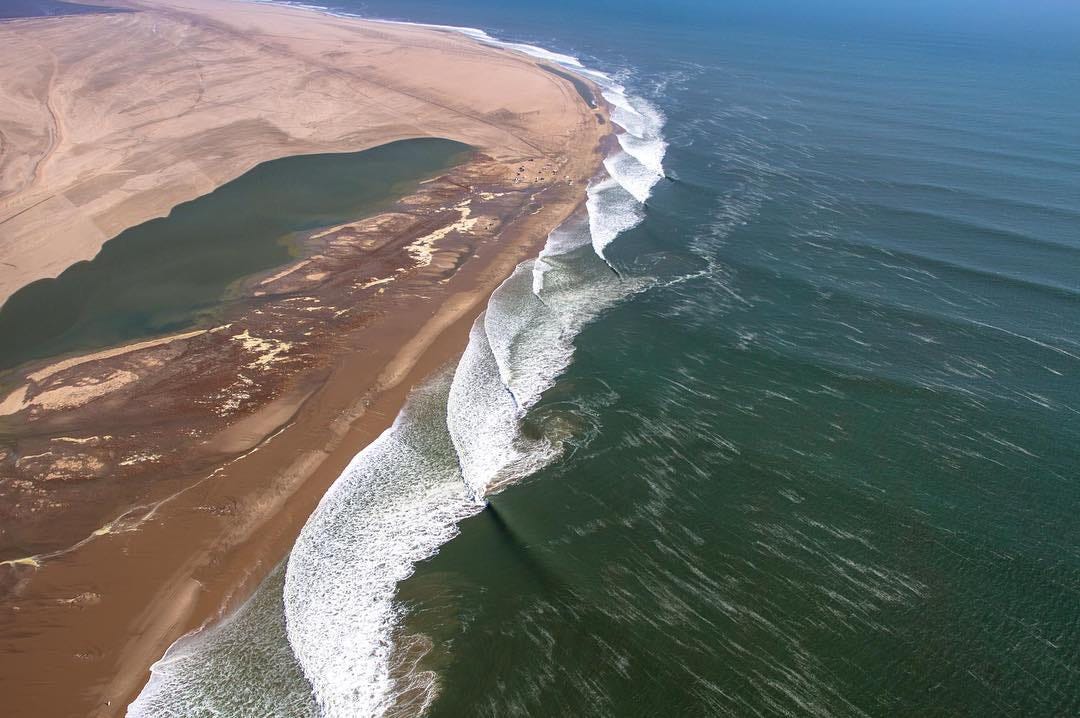Spot Check: Skeleton Bay
The Namibian Left that warped the surf time continuum
Every decade or so a wave is discovered that changes the very fabric of surfing. A wave that offers more than any other, a wave that cannot be compared to any other wave in existence. Back in 2009, when a wave ridden by Corey Lopez at Namibia’s Skeleton Bay was beamed over the nascent web, surfing had a real kick up the consciousness.
That wave went on to feature in the seminal surf film Lost’s 5′5″ x 19 1/4″: Redux, which showed Corey riding a wave that went for well over a minute, where he threaded about five different tubes, racing for kilometres at warp speed only metres from a windy sand shore. Ian Walsh who also surfed that session told me not long afterwards, “This is the best wave in the world. End of Story.”
Now Corey and Walshy’s waves weren’t the first surfed at Skeleton Bay. South Africa’s pre-eminent surf journalist and editor Craig Jarvis said, “Ten years prior to Corey Lopez's ridiculous wave, they were surfing it, or attempting to surf it. Emails were bandied about often enough between a few hardy Namibian locals and the South African surfing mag editors, telling them about the spot, inviting them up, begging them to have a look. Being the dumb, unbelieving fools that the Editors were at the time (me) they never took the offer.”
One surfer who did take up the offer was Grant “Twiggy” Baker, the South African had been told about a mythical left in the desert over a few beers in a South African bar and had made the pilgrimage half a dozen times before its “rediscovery”. Surfing Magazine Editor Evan Slater also surfed it 2006, though the resulting images didn’t quite do it justice.
After Corey’s wave though, the word was out and since then multiple clips have shown just how special wave this is. Aritz Aranburu has been there numerous times, slotting himself into backside tubes that look like Mundaka, just eight times as long and breaking only two metres from shore. Koa Smith (whose wave below truly captured the insanity of the wave), Kepa Acero, Anthony Walsh, Benji Brand, Naxto Gonzalez are just a few of the other multiple returnees and acolytes.
So far so good then. A new wave that offers the longest tubes in the world, breaking over sand and looking like cartoon perfection. So is it too good to be true? In some respects, well, yes. For Skeleton Bay to come alive it needs a specific period and direction of swell, the tide needs to be just right and the wind needs to be fresh offshore.
These variables don’t happen that often. The current is so diabolical it is pointless trying to paddle against it. There are plenty of big sharks around, but they're pretty well fed on the huge seals that live here, and it is a bleak, wind-swept beach that you spend your time on. It’s also a 36-hour drive from Cape Town, and you’ll need a 4WD, and probably a guide, or ideally a guide with 4WD.
It’s also deceptively difficult to ride. "The drop is all-important at this wave,” said South African Pro Dan Redman. “We've had some of the top surfers from South Africa go there and not make a takeoff for two days. And this can happen regularly.”
However, if you do manage to handle the drop, a wave of incomparable length, speed and tubetime awaits. By the time you have finished, you’ll be about a kilometre down the windswept desert beach, ready for a walk back and aiming to start all over again.
“You start off running and then mid-day you're kind of jogging and by the end of the day you're dragging your weary body to the top of the point,” said Twiggy. “But it's impossible to stop doing it when the waves are good.”
The perfect day: A massive Atlantic low creates a huge long period swell. Short-period swells don’t make it into the bay.
Getting there: Fly into Cape Town and then drive 36 hours north up the west coast of South Africa into Namibia. We can’t give you any more information than that.
Boards: Short, thicker and stronger than normal. This place breaks normal boards like toothpicks.
Essentials: A local guide, advanced take-off and tuberiding skills, heavy-duty fitness and a sense of adventure.
Accommodation: There is a local accommodation nearby, used by the kitesurfing crew for years. Once again, you’ll have to find the details on your own.
Other waves: Namibia offers some of the least explored and most potential for waves anywhere in the world. There are other Skeleton Bays out there, if you have the guts, determination and sense of adventure.


